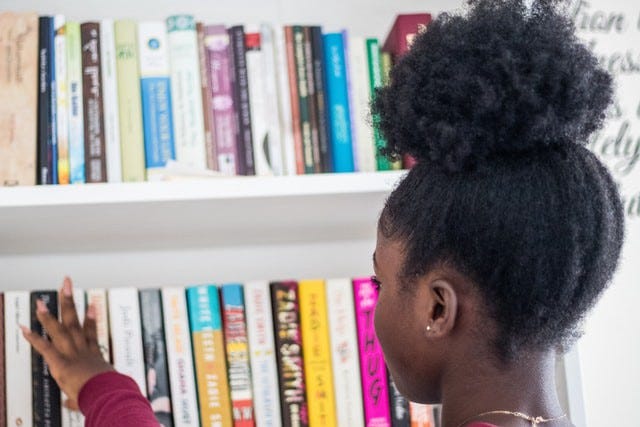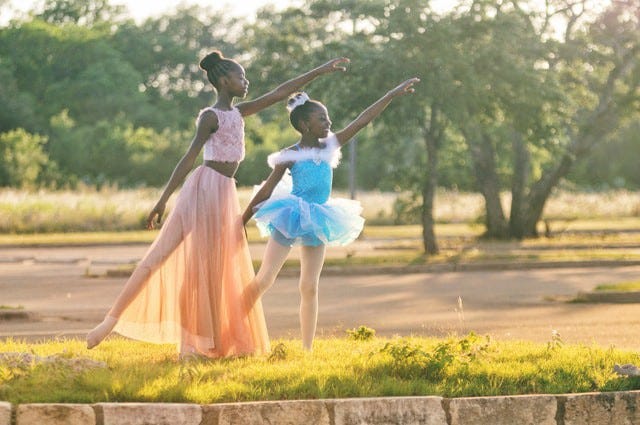Black book characters make black kids like me want to read more
Why Young, Black & Lit is onto something with its literature nonprofits

For the longest time, I wanted to see the banned episode of “Black-Ish” that ABC refused to air. The activist in me thought it was full of all kinds of foul words and righteousness. I envisioned everything from black gloves and afros to marches and chains. When “Please, Baby, Please” was released on Hulu, I signed up for a membership just to watch that one episode and was left thinking, “That’s it? That’s what I waited for all this time?” My imagination thought this episode would put director Spike Lee’s “Malcolm X” to shame. But about the only thing that surprised me was seeing Spike Lee’s actual book “Please, Baby, Please” featured in the show.
Recommended Read: “African history through the eyes of a child ~ How Ekiuwa Aire and ‘The 1619 Project’ educate all from childhood to adulthood”
While I rolled my eyes at ABC’s overreaction — and by default, showing us exactly where they stand on politics and racism — I was delighted to see that book again. It was the first and only children’s book I could find for my nephews when they were kids. Every other children’s book had blue-eyed, blonde children that looked nothing like them, and I was adamant that they be able to see kids who mirrored their own image. I bought that book for my youngest nephew and Hill Harper’s “Letters to a Young Brother” for my older nephew.
ADVERTISEMENT ~ Amazon
As an Amazon Affiliate, I earn a percentage from purchases using my referral links.
How ‘The Babysitters Club’ influenced black girls like me
As a kid, I counted down the minutes until library book sales started in my elementary school. While I was definitely going to buy any Ramona books I could find and check out what was going on in Fear Street and Goosebumps books from R.L. Stine, I was really trying to dig up all the The Babysitter’s Club Super Specials. I had more than 100 The Babysitter’s Club books and at least 10 Super Specials, and I wanted to know what those babysitters were up to — specifically Jessica.
I’d paid absolutely no attention to ballet as a child until a hip-hop ballet group came to my school. That intrigued me enough to figure out who Alvin Ailey was. Shortly after, author Ann M. Martin introduced her readers to an African-American ballerina named Jessica in “Hello, Mallory” (1988), plus an Asian character like Claudia who was a main character fairly early on. By the time I found out Jessica could speak sign language (1995), my mind was officially blown. The Babysitter’s Club was different, and I wanted to know everything they were doing.
ADVERTISEMENT ~ Amazon
As an Amazon affiliate, I earn a percentage from purchases with my referral links. I know some consumers are choosing to boycott Amazon for its DEI removal. However, after thinking about this thoroughly, I choose to continue promoting intriguing products from small businesses, women-owned businesses and (specifically) Black-owned businesses who still feature their items on Amazon. All five of my Substack publications now include a MINIMUM of one product sold by a Black-owned business. (I have visited the seller’s official site, not just the Amazon Black-owned logo, to verify this.) If you still choose to boycott, I 100% respect that decision.
Why the Board of Education should pay attention to Young, Black & Lit
While the Board of Education, mainstream publishing industries and an uncomfortable amount of K-12 instructors don’t realize why this matters so much, being able to see oneself in literature does wonders for a child’s interest in English and Creative Writing. It made me want to be an author in the first place.
So I applaud organizations like Young, Black & Lit, which provides free books that feature black main characters. According to CNN, the organization has distributed more than 5,000 books in the Chicagoland area through book fairs, community groups and schools. Chicago takes a lot of flak for national news coverage and crime rates, but these are the stories that make me puff my chest out and wish would get more coverage.









